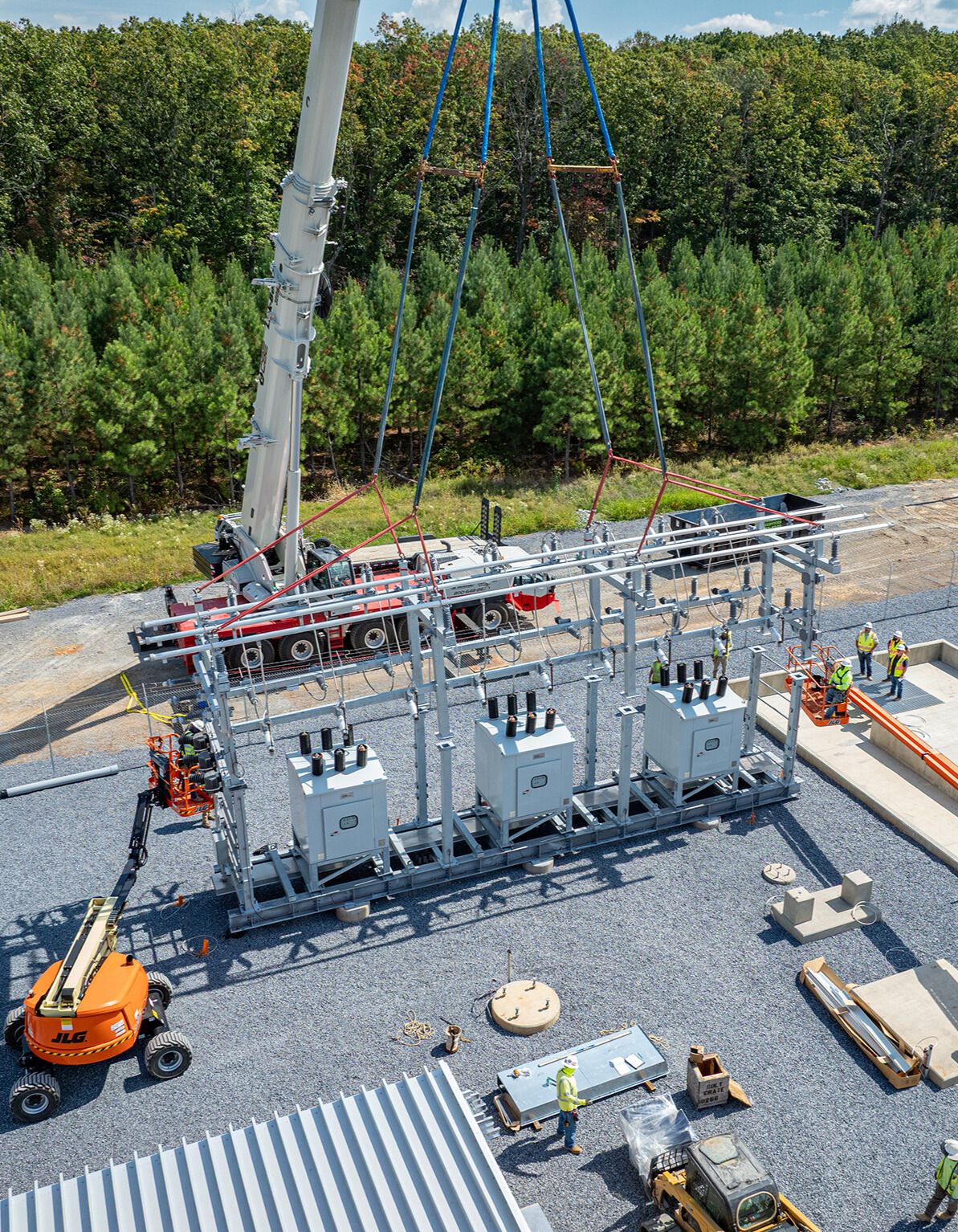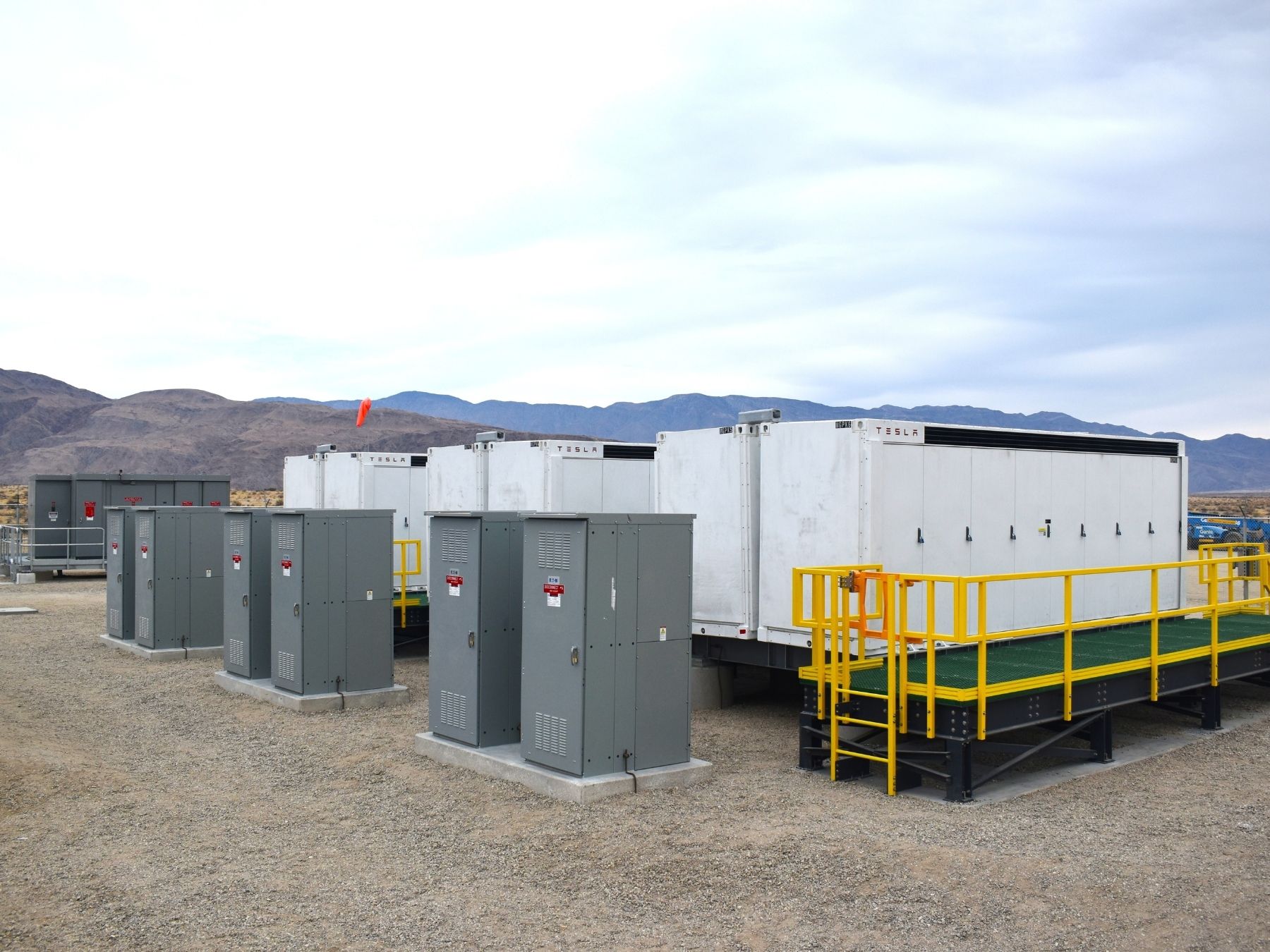
Updated:
Originally Published:

As 2026 approaches, the electric utility industry stands at a defining moment. Across the country, the demand for electricity continues to surge—driven by AI data centers and electrification. Yet utilities face tightening budgets, evolving regulations, and pressure to keep ratepayer costs down
This year’s top utility conferences offered a clear preview of what’s ahead for utility substation design, construction, and operation.
At the 2025 T&D World Live Conference in Phoenix, one word echoed through nearly every session: modernization. From AI-driven analytics to augmented reality for field crews, utilities are rethinking how they plan and operate the grid.
New tools are not just making systems more efficient—they’re helping utilities predict and prevent failures before they happen. Whether using drone inspections to identify vegetation risks or leveraging AI models to analyze thermal data from substations, digital intelligence is helping utilities stay a step ahead of outages and wildfires.
In substation design, AI and automation are transforming workflows. As showcased at the 2025 SDSIC Spring Conference, utilities are adopting rule-based 3D modeling and design automation tools to streamline engineering and reduce rework. Beta Engineering’s sessions demonstrated how technologies like Autodesk Revit, Advance Steel, and Inventor can integrate into seamless design-to-fabrication workflows—accelerating project timelines and improving precision.
“The tool isn’t the hard part—it’s getting everyone to use it the same way,” one attendee stated at SDSIC, underscoring the real challenge: adoption and alignment.
Substation design no longer happens in isolation. Interoperability and shared standards are becoming cornerstones of modern grid development. As utilities evaluate which software ecosystems best fit their needs—such as Autodesk Revit, Bentley, or AutoCAD Plant 3D—the focus is shifting away from a siloed approach toward collaboration and data continuity across teams and contractors.
That’s where EPC partners like Beta play a crucial role—helping bridge resource gaps and guiding utilities through the technology transition. With staff shortages persisting across the industry, collaboration between utilities and trusted partners is essential to ensure quality, consistency, and knowledge transfer on every project.
Speed and flexibility are more essential than ever. At the 2025 Southeastern Electric Exchange (S.E.E.) conference, utilities like Dominion Energy shared how factory-built and preassembled substation modules can shave up to 20 weeks off on-site construction schedules—when facing condensed project schedules and critical in-service dates.
These modular solutions give more schedule certainty while also improving safety and quality by shifting much of the above-grade work into a controlled factory environment.

Another key theme heading into 2026 is training and workforce development. At the S.E.E. annual conference, Duke Energy and CenterPoint Energy both emphasized bringing engineers into the field and investing in hands-on training centers. As new technologies reshape utility operations, developing field-ready engineers and technicians will be crucial to long-term grid reliability.
Attendees also spotlighted the growing importance of storm preparedness and response. Utilities shared lessons from Hurricane Helene, exploring new ways to assess and recover from severe storm damage—including testing transformer resilience and improving substation flood response protocols.
At the 2025 SSCA Sustainable Sourcing Conference, utilities and suppliers focused on how to pursue clean energy progress while maintaining affordability and reliability.
The electricity demand “super cycle,” driven by AI and data centers, is testing the limits of U.S. infrastructure. Utilities are responding by strengthening collaboration across the value chain and focusing on practical, scalable clean energy solutions.
Beta’s case study presentation “Designing for the Desert: Resilient Clean Energy in Borrego Springs” highlighted how resilient microgrids can sustain communities through extreme weather and outages. Built for San Diego Gas & Electric, the 6.7 MW battery expansion in Borrego Springs enables full clean-energy operation during grid disruptions—proof that reliability and sustainability can coexist, even in harsh environments.

At the Solar & Energy Storage Summit hosted by Wood Mackenzie, optimism around the solar energy and BESS industry was tempered by market headwinds. Speakers warned that the renewable sector remains fragile, citing tariffs, permitting delays, and supply chain challenges that could slow clean energy deployment in the short term.
The mismatch between data center demand (which can reach 100 MW per site) and typical solar project capacity (1–5 MW) underscores the scale of the challenge. Utilities and developers are exploring alternate energy sources—including natural gas and nuclear—to bridge the gap.
A recent Wood Mackenzie and ACP report confirmed this trend. While 2025 was a record year for utility-scale storage, deployments are expected to decline in 2026 due to policy changes around battery material sourcing, with recovery not anticipated until 2029.
While this pause could challenge project timelines, it also gives utilities a moment to refocus on grid efficiency. As storage growth tapers, investments in automation, analytics, and design innovation will be key to making every megawatt of existing capacity count.
Technology may define the future of substations, but people will shape it. Across all 2025 utility conferences, one consistent message rang clear: progress happens when utilities, contractors, and vendors share ideas openly.
Whether in a panel discussion or an impromptu hallway conversation, collaboration remains the real engine of industry transformation. The next generation of substations won’t be built by algorithms alone—it will be built by engineers, project managers, and partners who challenge each other to build better.
As utilities plan for the next phase of modernization, 2026 is shaping up to be a year defined by technological implementation and integration.
Utilities will be expected to:
As the grid grows smarter, so must the partnerships that power it. The future of substations—and the grid itself—depends not only on what is built, but how it is built: with collaboration and innovation at every level.
Beta Engineering is a substation EPC company headquartered in Pineville, La., with an office in San Diego. Since 1975, we’ve helped utilities, renewable developers, and other power delivery companies across the U.S. complete high-voltage substation and transmission line projects. Contact our team to tap into 50 years of problem-solving experience—and a proven commitment to safety.
Updated:
October 30, 2025
Updated:
Originally Published:

As 2026 approaches, the electric utility industry stands at a defining moment. Across the country, the demand for electricity continues to surge—driven by AI data centers and electrification. Yet utilities face tightening budgets, evolving regulations, and pressure to keep ratepayer costs down
This year’s top utility conferences offered a clear preview of what’s ahead for utility substation design, construction, and operation.
At the 2025 T&D World Live Conference in Phoenix, one word echoed through nearly every session: modernization. From AI-driven analytics to augmented reality for field crews, utilities are rethinking how they plan and operate the grid.
New tools are not just making systems more efficient—they’re helping utilities predict and prevent failures before they happen. Whether using drone inspections to identify vegetation risks or leveraging AI models to analyze thermal data from substations, digital intelligence is helping utilities stay a step ahead of outages and wildfires.
In substation design, AI and automation are transforming workflows. As showcased at the 2025 SDSIC Spring Conference, utilities are adopting rule-based 3D modeling and design automation tools to streamline engineering and reduce rework. Beta Engineering’s sessions demonstrated how technologies like Autodesk Revit, Advance Steel, and Inventor can integrate into seamless design-to-fabrication workflows—accelerating project timelines and improving precision.
“The tool isn’t the hard part—it’s getting everyone to use it the same way,” one attendee stated at SDSIC, underscoring the real challenge: adoption and alignment.
Substation design no longer happens in isolation. Interoperability and shared standards are becoming cornerstones of modern grid development. As utilities evaluate which software ecosystems best fit their needs—such as Autodesk Revit, Bentley, or AutoCAD Plant 3D—the focus is shifting away from a siloed approach toward collaboration and data continuity across teams and contractors.
That’s where EPC partners like Beta play a crucial role—helping bridge resource gaps and guiding utilities through the technology transition. With staff shortages persisting across the industry, collaboration between utilities and trusted partners is essential to ensure quality, consistency, and knowledge transfer on every project.
Speed and flexibility are more essential than ever. At the 2025 Southeastern Electric Exchange (S.E.E.) conference, utilities like Dominion Energy shared how factory-built and preassembled substation modules can shave up to 20 weeks off on-site construction schedules—when facing condensed project schedules and critical in-service dates.
These modular solutions give more schedule certainty while also improving safety and quality by shifting much of the above-grade work into a controlled factory environment.

Another key theme heading into 2026 is training and workforce development. At the S.E.E. annual conference, Duke Energy and CenterPoint Energy both emphasized bringing engineers into the field and investing in hands-on training centers. As new technologies reshape utility operations, developing field-ready engineers and technicians will be crucial to long-term grid reliability.
Attendees also spotlighted the growing importance of storm preparedness and response. Utilities shared lessons from Hurricane Helene, exploring new ways to assess and recover from severe storm damage—including testing transformer resilience and improving substation flood response protocols.
At the 2025 SSCA Sustainable Sourcing Conference, utilities and suppliers focused on how to pursue clean energy progress while maintaining affordability and reliability.
The electricity demand “super cycle,” driven by AI and data centers, is testing the limits of U.S. infrastructure. Utilities are responding by strengthening collaboration across the value chain and focusing on practical, scalable clean energy solutions.
Beta’s case study presentation “Designing for the Desert: Resilient Clean Energy in Borrego Springs” highlighted how resilient microgrids can sustain communities through extreme weather and outages. Built for San Diego Gas & Electric, the 6.7 MW battery expansion in Borrego Springs enables full clean-energy operation during grid disruptions—proof that reliability and sustainability can coexist, even in harsh environments.

At the Solar & Energy Storage Summit hosted by Wood Mackenzie, optimism around the solar energy and BESS industry was tempered by market headwinds. Speakers warned that the renewable sector remains fragile, citing tariffs, permitting delays, and supply chain challenges that could slow clean energy deployment in the short term.
The mismatch between data center demand (which can reach 100 MW per site) and typical solar project capacity (1–5 MW) underscores the scale of the challenge. Utilities and developers are exploring alternate energy sources—including natural gas and nuclear—to bridge the gap.
A recent Wood Mackenzie and ACP report confirmed this trend. While 2025 was a record year for utility-scale storage, deployments are expected to decline in 2026 due to policy changes around battery material sourcing, with recovery not anticipated until 2029.
While this pause could challenge project timelines, it also gives utilities a moment to refocus on grid efficiency. As storage growth tapers, investments in automation, analytics, and design innovation will be key to making every megawatt of existing capacity count.
Technology may define the future of substations, but people will shape it. Across all 2025 utility conferences, one consistent message rang clear: progress happens when utilities, contractors, and vendors share ideas openly.
Whether in a panel discussion or an impromptu hallway conversation, collaboration remains the real engine of industry transformation. The next generation of substations won’t be built by algorithms alone—it will be built by engineers, project managers, and partners who challenge each other to build better.
As utilities plan for the next phase of modernization, 2026 is shaping up to be a year defined by technological implementation and integration.
Utilities will be expected to:
As the grid grows smarter, so must the partnerships that power it. The future of substations—and the grid itself—depends not only on what is built, but how it is built: with collaboration and innovation at every level.
Beta Engineering is a substation EPC company headquartered in Pineville, La., with an office in San Diego. Since 1975, we’ve helped utilities, renewable developers, and other power delivery companies across the U.S. complete high-voltage substation and transmission line projects. Contact our team to tap into 50 years of problem-solving experience—and a proven commitment to safety.
Related Services:
